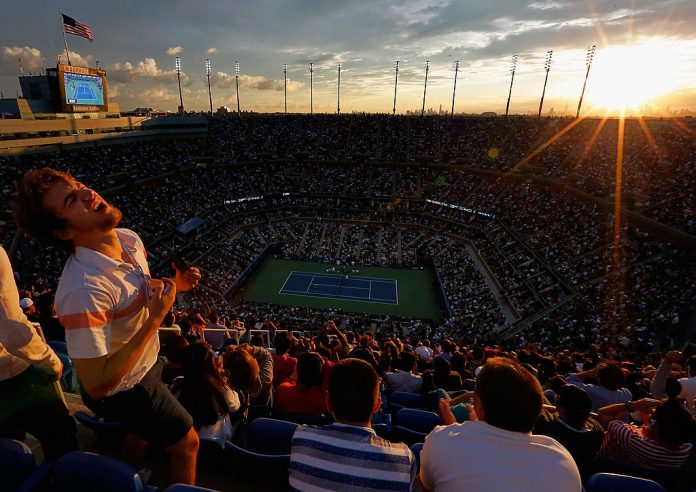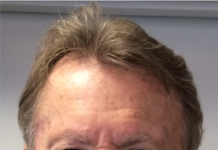Bill Simons
Everyone knew a change was coming. USTA watchers have long realized that, despite all its wealth, the massive federation was in need of streamlining. While some pointed to its dazzling successes, critics claimed it was a 21st-century organization with 19th-century protocols. There were excesses and duplications. But few imagined a day of reckoning like today, in which 23% of the staff will be laid off. That is 110 jobs. Plus, there will be massive changes in programming, major consolidations in structure, and the group’s White Plains, New York base will be closed.
In an exclusive interview with Inside Tennis, USTA Executive Director Michael Dowse explained, “The initial driving force was to get our organization leaner and meaner and closer to our strategic priorities.” He noted that over the years, “The USTA staff had a fair amount of overlap of responsibilities and some of the positions we had were not aligned with our five priorities.”
Dowse told IT, “Financials definitely had an impact on these changes, but it was not the leading reason. I was brought in to restructure the organization and to align the USTA with what we call our five strategic priorities. Regardless of the pandemic and its effect on the Open, that was something I was going to work with the board to do. When the pandemic happened, it obviously amplified the situation even more.”
The huge semi-annual meetings that have long been held in Manhattan during the US Open will be canceled. Kurt Kamperman, a much respected USTA Executive who now oversees the group’s Lake Nona campus, will be retiring at year’s end. David Brewer will be leaving as the US Open’s Tournament Director. Former WTA chief Stacy Allaster will be the new US Open Tournament Director. The USTA Player Development Program, headed by Martin Blackman, will merge with the USTA’s Community Tennis division that’s led by Craig Morris.
As for the US Open, a leading USTA spokesperson told IT that the organization is working to keep the tourney in New York and play it on the same dates it was originally scheduled. He added, “That’s the game plan. We’ll see if we can make it happen.”
Reports have indicated that players will be restricted to staying in airport hotels outside of Manhattan, having limited entourages of just one person, possibly playing the best of three sets, having restricted locker rooms, adult ball persons only and a 14-day quarantine for people arriving from outside the US. Dowse added, “We haven’t finalized an official plan yet. We’re trying to be collaborative, working with the ATP and the WTA. What’s giving me comfort is that we’ve gotten really clear on what I call the three guiding principles. And if we achieve those, we’ll have the tournament.
“No. 1, and first and foremost, the health and well-being of everyone – staff, players, and the local community. Of course, we must work with the government and get approvals to get through that gate. No. 2: Is having the Open good for tennis? Are we putting out a good product? Are we providing good content for our media partners and the tennis community? And right now everything we are hearing is, ‘Yes.’ Our media partners are starved for content, our tennis players are starved. We feel it would be great. The third question is whether it makes financial sense. And that means for all the stakeholders, the players, and the USTA, which is ultimately our sections and our mission [to advance tennis].”
Dowse noted that all the potential US Open restrictions, such as smaller entourages and travel and locker room limitations, are being put in place to meet COVID-19 guidelines. He said, “We are doing all that to check that first box of health and safety for everyone.” He noted that the USTA is in contact with the game’s marquee players like Roger, Rafa, Serena and Novak, either directly or through their agents, the ATP or the WTA.
As for grants to the USTA’s 17 local sections, Dowse said, “It gets complicated because there are so many funding mechanisms. But essentially we have committed (although it varies slightly by section because of the math) to have the sections’ 2020 funding equal to their 2019 funding, and at this point we are committing to have the sections’ 2021 funding be 91% of what they received in 2020.
Some noted that a great number of people with deep tennis knowledge and experience will be leaving the USTA. Dowse agreed and added that the changes “are being driven by the betterment of the organization rather than being a cost-cutting exercise. We are aligning the organization with our strategy – and the nice thing is that we have some good transition time in place with some of our key executives.”
In the past he regularly got reports from 12 divisions. That number will be reduced to 8. And there will be 3 “verticals” including community tennis, revenue (or commercial), which will be led by Lewis Sherr, and pro tennis, which will be led by Allastar. There will also be “horizontals,” including legal and administration, IT and digital, marketing and the USTA Billie Jean King Tennis Center.
Dowse noted that the USTA might have some smaller meetings during the US Open to replace the semi-annual meeting – a massive gathering of well over a thousand that entailed huge costs, including free tickets, transportation and hospitality. “We’re all contributing to try and save money,” said Dowse. “We’re going to try this for a few years and see if we can save money and do our business with just one meeting a year. If not, we’ll revisit the situation.”
Dowse added that the USTA has revised its safe play guidelines relating to a key aspect of the game – doubles, “Essentially, if you plan to play doubles, practice social distancing. We’ve gotten away from any language implying you should not play doubles.”
Dowse, who just came on board last fall, took a breath and recalled a January breakfast meeting he’d had with Inside Tennis during the Australian Open, before the impact of the pandemic had become clear. He said, “Whenever I chat with Inside Tennis I smile and think, ‘We could never have imagined the next five months would be like this.’”




















Mike Dowse is EXACTLY the right person at this critical juncture to be leading the USTA. Changes were needed and, I have no doubt, he will implement them to the great long-term benefit of the USTA and tennis community. Excellent info, IT.